Solanum andreanum
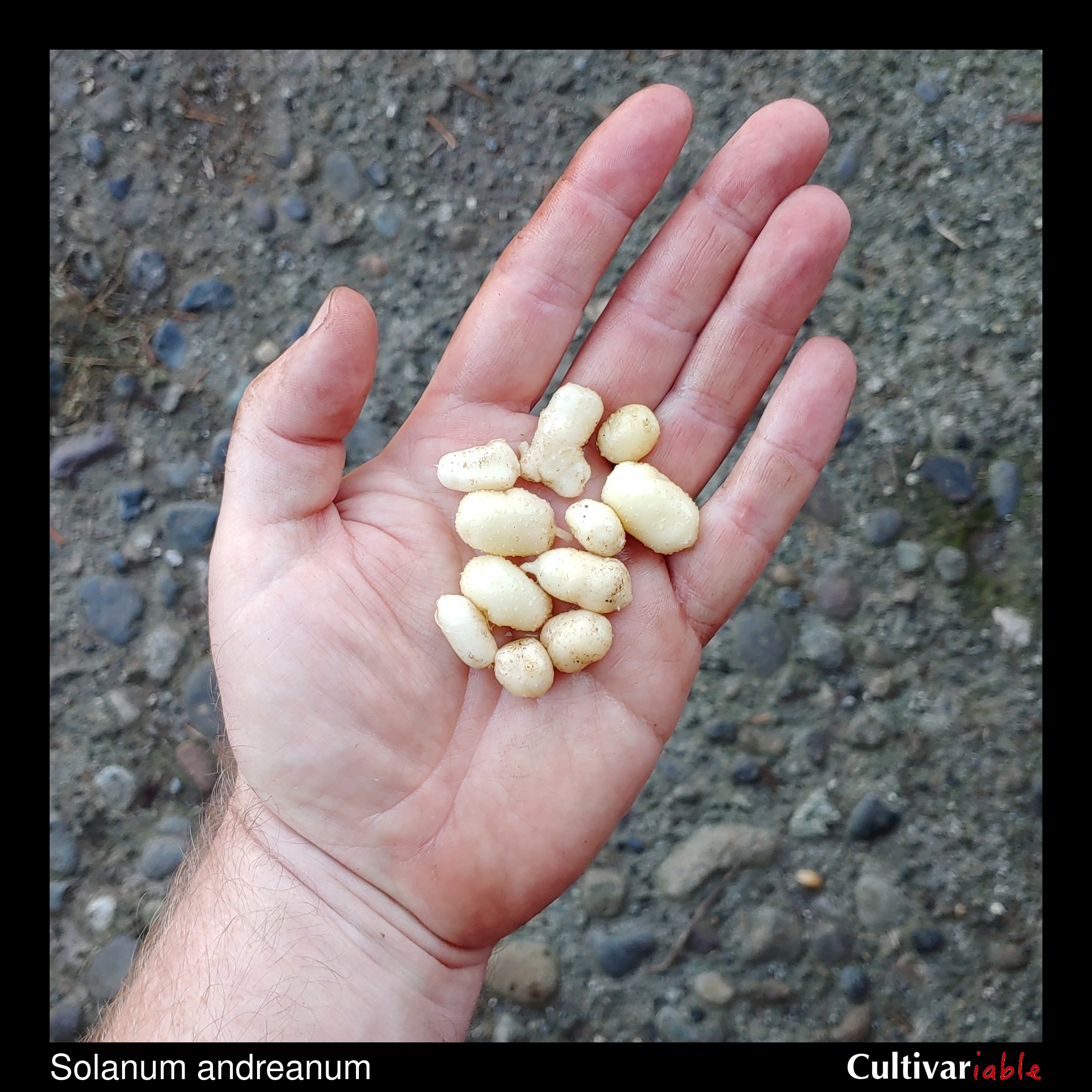
| Common Names | Papa de vieja |
| Code | adr |
| Synonyms | S. baezense, S. burtonii, S. correllii, S. cyanophyllum, S. paucijugum, S. pichinchense, S. regularifolium, S. serratoris, S. solisii, S. suffrutescens, S. tuquerrense |
| Clade | 3 |
| Series | Tuberosa |
| Ploidy | Diploid (2x), Tetraploid (4x) |
| EBN | 2 |
| Tuberization Photoperiod | Short Day |
| Self-compatibility | No |
| Nuclear Genome | P |
| Cytoplasmic Genome | Unknown |
| Citation | Baker: J. Linn. Soc., Bot. 20:498. 1884 |
Description
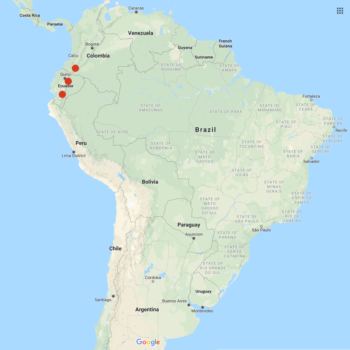
Solanum andreanum is a species found in Ecuador and Colombia, growing at elevations between about 11,500 and 13,000 feet. Plants a little more than a foot tall. Flowers large, purple. Tuber small, whitish, sometimes with purple eyes.
The specific epithet, andreanum, honors Mexican naturalist Andrés Sessé. While there is no completely standardized pronunciation for scientific names, the most common way to pronounce this species is probably so-LAY-num an-DREE-ah-num.
Resistances
Bethke (2017) scored wild potato species as a composite of seven resistance studies and S. andreanum (as S. paucijugum) ranked in second place.
Vega (1995) found that this species is less frost tolerant than domesticated potato.
Chung (2011) found extreme variance in resistance in bacterial soft rot in this species. For accession PI 561650, which they identified as S. paucijugum, but was since reidentified as S. andreanum, they found the lowest level of lesion formation in the study. On the other hand, they found the highest level of lesion formation in the study for PI 320345.
| Condition | Type | Level of Resistance | Source |
|---|---|---|---|
| Alternaria solani (Early Blight) | Fungus | Somewhat resistant | Jansky 2008 |
| Globodera pallida (Pale Cyst Nematode) | Invertebrate | Somewhat resistant | Castelli 2003 (as S. paucijugum) |
| Globodera rostochiensis (Potato Cyst/Golden Nematode) | Invertebrate | Not resistant | Castelli 2003 (as S. paucijugum) |
| Pectobacterium carotovorum (Blackleg/Soft Rot) | Bacteria | Resistant | Chung 2011 (as S. paucijugum) |
| Phytophthora infestans (Late Blight) | Fungus | Resistant | Gonzales 2002 (as S. paucijugum) |
| Phytophthora infestans (Late Blight) | Fungus | Some resistance | Perez 2019 |
| Potato Virus Y (PVY) | Virus | Not resistant | Cai 2011 |
Glykoalkaloid content
No information.
Images
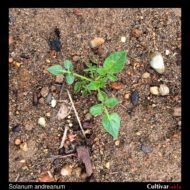 |
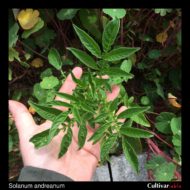 |
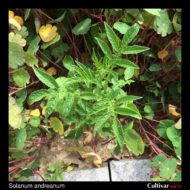 |
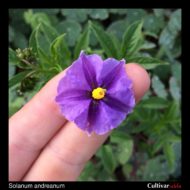 |
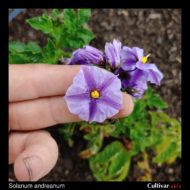 |
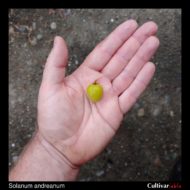 |
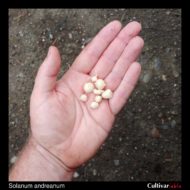 |
|
Cultivation
I have found this species slow to germinate using the standard conditions for S. tuberosum. The USDA Potato Genebank has observed that germination of some accessions of this species is inhibited by GA3 (Bamberg 1999).
Towill (1983) found that seeds of this species stored at 1 to 3 degrees C germinated at 12% after 12 years.
I have had a pretty difficult time getting plants of this species to tuberize. It appears to me that they form tubers much later than even most other short day species.
Breeding
Crosses with S. tuberosum
Watanabe (1991) found that 13.9% of varieties of this species produced 2n pollen (calculated from the results for S. andreanum and S. tuquerrense, which has since been reclassified as S. andreanum), which would be effectively tetraploid and 4EBN.
| Female | Male | Berry Set |
Seed Set | Germ | Ploidy | Source |
|---|---|---|---|---|---|---|
| S. andreanum (including S. paucijugum, S. solisii, and S. tuquerrense) | S. tuberosum | None | None | Jackson (1999) | ||
| S. tuberosum 4x | S. andreanum (including S. paucijugum, S. solisii, and S. tuquerrense) | None | None | Jackson (1999) | ||
Crosses with other species
Jackson (1999) found 9-12% 2n pollen for varieties of this species.
| Female | Male | Berry Set |
Seed Set | Germ | Ploidy | Source |
|---|---|---|---|---|---|---|
References
Solanum andreanum at Solanaceae Source
